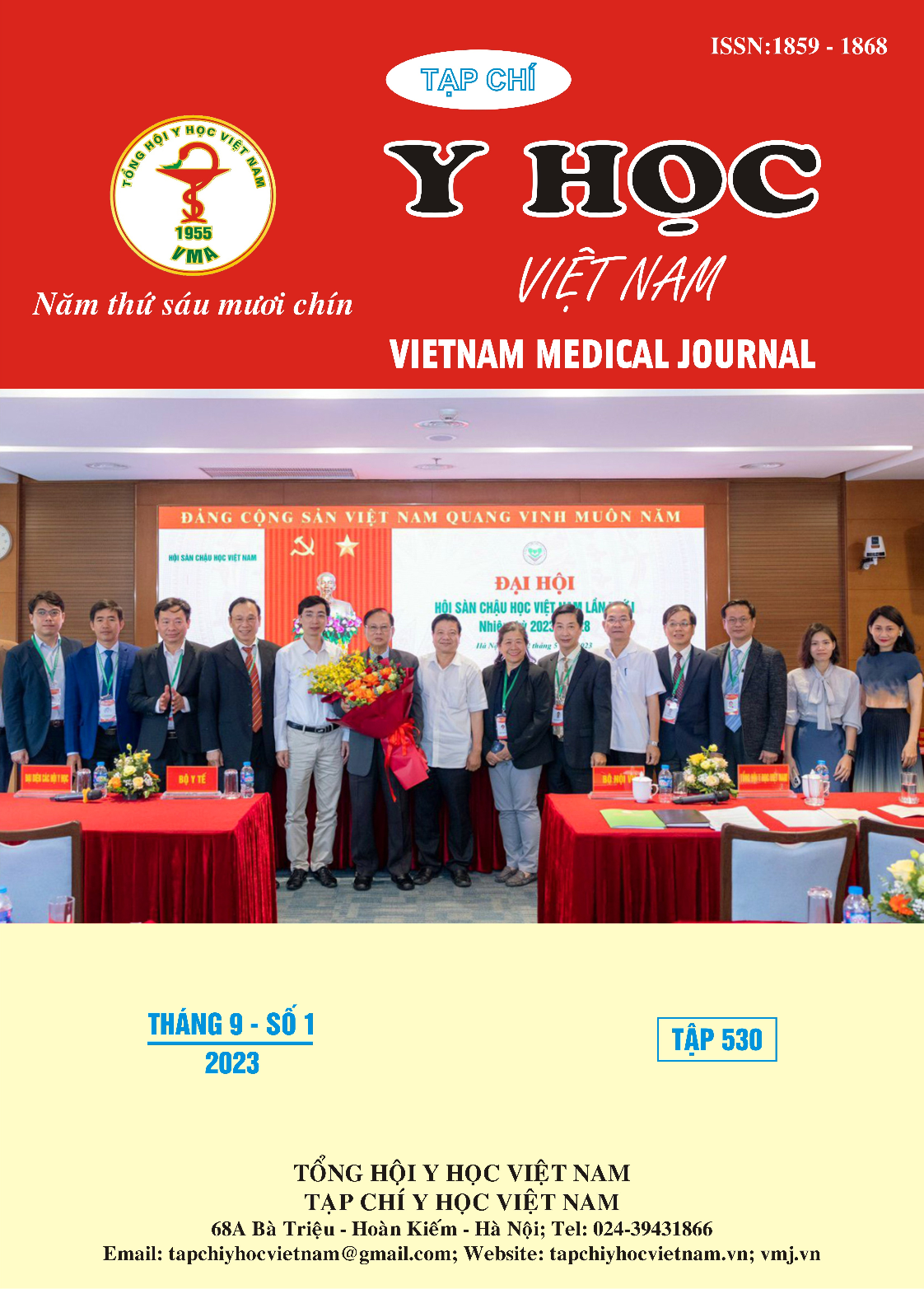PATHOGENS DETECTED IN SPUTUM OF HOSPITALIZED COMMUNITY - ACQUIRED PNEUMONIA PATIENTS
Main Article Content
Abstract
Background: Hospitalized community - acquired pneumonia (CAP) is a common disease that usually caused by bacteria and virus. However, it is hard to identify the pathogens because of patient’s sputum, which gets contamination at the high risk when passing through the oropharynx. While the traditional culture for detecting pathogens is still limited, the multiplex real-time PCR is used as an optimal technique to detect not only the bacteria but also the atypical bacteria, virus and fungi. Objects: To determine the rate of pathogenic microorganisms in sputum of hospiatalized community - acquired pneumonia patients by multiplex real-time PCR. Methods: 138 samples of the sputum from CAP patients hospitalized at Nguyen Tri Phuong hospital were assessed the reliability based on Barlett’s scales before using multiplex real-time PCR to detect pathogenic microoganisms. Results: Among 138 sputum samples, there were 137 cases (99.3%) detected with pathogenic microoganisms, in which 9 cases were detected in single infection (6.5%) and 117 cases in co-infection (85.4%). There were 88.4% of sputum samples infected with bacteria, 79% infected with virus and 62.3% infected with fungi. Conclusions: The rate of pathogenic microoganisms detected from sputum of hospitalized CAP patients is 99.3%, in which bacterial infection 88.4%, viral infection 79.0% and fungi infection 62.3%. The rate of co-infection is 85.4%.
Article Details
Keywords
Hospitalized community - acquired pneumonia, pathogenic microoganisms caused CAP
References
2. Phạm Hùng Vân (2018), “Tác nhân vi sinh gây nhiễm trùng hô hấp dưới cộng đồng cấp tính không nhập viện - Kết quả bước đầu từ nghiên cứu EACRI (Việt Nam)”, Tạp chí Hô Hấp, (15), tr. 41-55.
3. Kuypers J.Jerome K.R. (2017), “Applications of digital PCR for clinical microbiology”, Journal of clinical microbiology, 55(6), pp. 1621-1628.
4. Phạm Hùng Vân, Nguyễn Văn Thành và cộng sự (2018), “Tác nhân vi sinh gây viêm phổi cộng đồng phải nhập viện – Kết quả nghiên cứu REAL 2016-2017”, Thời sự Y Học, tháng 03/2018, tr. 51-63.
5. Lý Khánh Vân, Phạm Hùng Vân (2018), “Tác nhân vi sinh gây viêm phổi cộng đồng phải nhập viện”, Tạp chí Y học TP.HCM, tr. 238-243.
6. Trần Anh Đào (2011), Đặc điểm lâm sàng và cận lâm sàng của viêm phối mắc phải cộng đồng tại khoa Hô hấp bệnh viện Nhân dân Gia Định, Luận văn Thạc sĩ y học chuyên ngành Lao, Đại học Y dược TP.HCM, tr. 63-64 và 106-107.
7. Arnold F.W., Summersgill J.T., et al (2007), “A worldwide perspective of atypical pathogens in community-acquired pneumonia”, American journal of respiratory and critical care medicine, 175(10), pp. 1086-1093.
8. Peto L., Nadjm B., et al (2014), “The bacterial aetiology of adult community-acquired pneumonia in Asia: a systematic review”, Transactions of the Royal Society of Tropical Medicine and Hygiene, 108(6), pp. 326-337.


